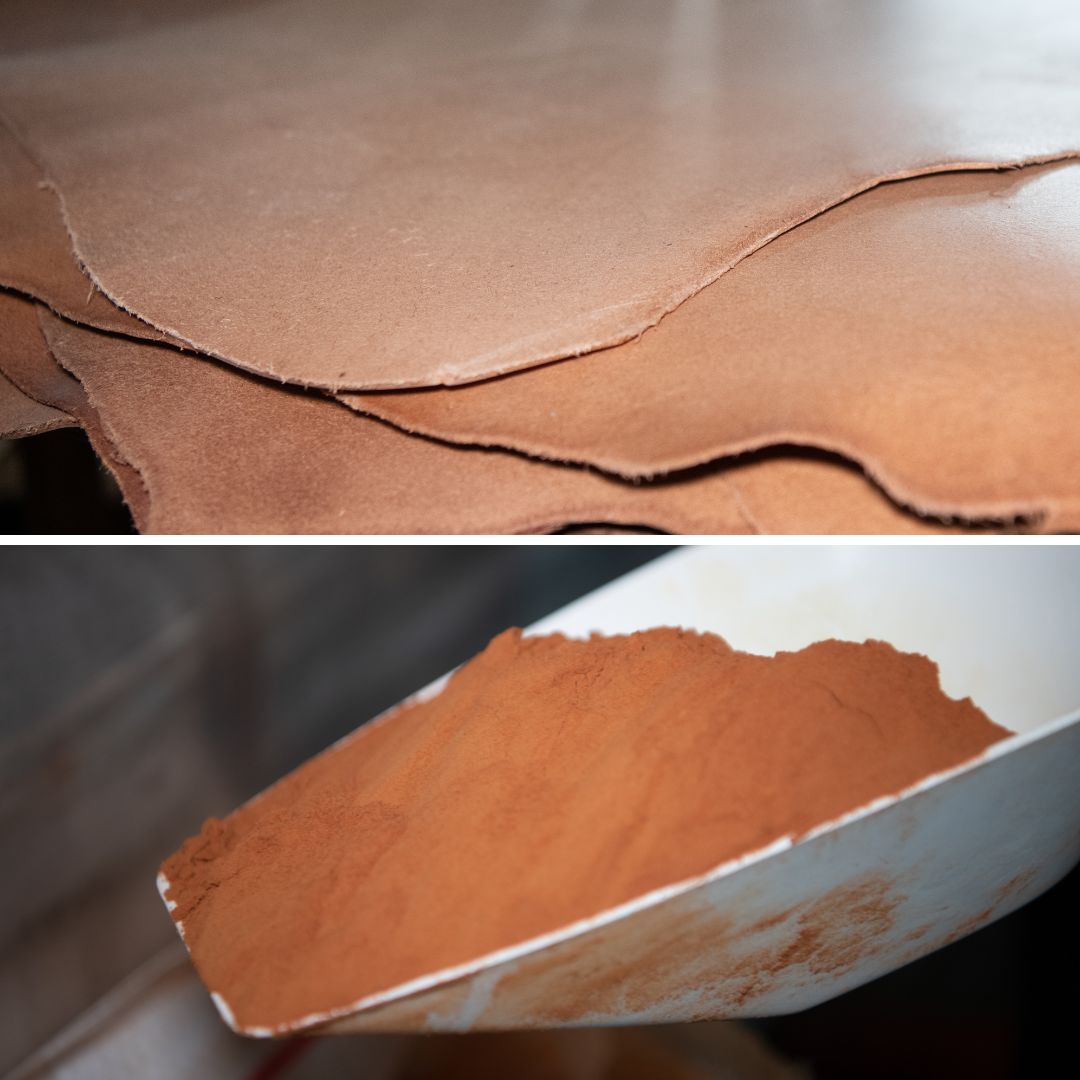There are many options for designers and brands who, for whatever reason, prefer not to work with leather plastics (PVC and PU) and canvas are among the most widely used.
But it is important to examine the advantages and disadvantages of alternative materials to natural leather, especially on environmental impacts.
The question is: which product uses the least amount of non-renewable resources and which product is the least costly for the environment?
The production of real leather
Like any industry, the production of genuine leather has an environmental impact during its production.
However, unlike other industries, the production of genuine leather is particularly well regulated in Europe. Remarkable progress has been made in the use of renewable energy in tanneries, with some tanners moving towards fully renewable energy.
Progress has also been made in terms of reducing water consumption, but especially in the water treatment process, as we have done at Radermecker Tannery with our new water treatment plantfor the treatment of wastewater, which has a biological process. In fact, thanks to this treatment plant, La Radermecker Tannery creates so-called "biological" sludge that we can revalue with the farmers for the spreading of the fields.
The Global Tannery of the Year program program and World Leather magazine have highlighted the excellent work of tanners around the world in terms of corporate social responsibility and, most importantly, environmental best practices. This program has demonstrated a massive commitment to reducing chemical use, reducing water use and reducing energy consumption.

Furthermore, as explained in our blog post, " Leather, a sustainable and ecological material ", leather is a by-product of our food chain. Thus, as long as we consume meat, leather making will remain a way to recycle food scraps, which would otherwise be wasted or burned.
Are alternative materials to leather better for the environment?
Plastic is a common substitute for leather

We often think that everything that is not of animal origin is necessarily vegetable. Well, think again: many well-known alternatives to leather are made from plastics. The most common plastics are polyvinyl chloride (PVC) and polyurethane (PU). The production of alternative materials to leather requires many chemicals and large amounts of water. In addition, plastic is still a material that requires fossil fuels for its manufacture and chemicals for its processing. The process releases additional greenhouse gases into the air and pollutes nature and waterways.
The Center of Environmental Health is a U.S. nonprofit organization that works to protect children and families from harmful chemicals in our air, food, water and everyday products. It conducted a comparison between leather and PVC by focusing on handbags, produced with alternative materials to leather. The study found that many bags contained high levels of lead, a known toxin linked to many diseases such as cancer. The level of lead in some PVC bags was 100 times higher than the regulated lead level for children's toys. In addition to lead, the Center of Environmental Health also found disruptive ingredients in PVC such as chlorine and petroleum.
Is vegan leather really eco-responsible?

Obviously, vegan leather is a bit of a complicated topic, as there are many misconceptions about the difference between ethically sourced leather and eco-friendly leather. One of the alternatives to real leather is so-called "vegan" leather. Vegan leather refers to alternatives to leather that are not derived from animals and do not contain products tested on them. The problem with the term vegan leather is that it is used indiscriminately by the fashion industry to position itself on ecological values. But this term does not mean carbon neutral at all. Much of the vegan leather is made from the two plastic polymers mentioned above: PVC and PU. The use of these materials is of course neither sustainable nor biodegradable, which means that vegan leather is really only used for " greenwashing"This means that vegan leather is really just greenwashing, as it gives the illusion to consumers that they care about the environment. Many brands of fast fashion "Many fast fashion brands use vegan leather because it is easier and cheaper to obtain. But most vegan leather products are mostly unsustainable. Their short lifespan leads to overuse of products that will end up in landfills for centuries.
The purpose of products made with alternative materials to leather

To evaluate the environmental impact of a product, it is not enough to consider the elements for its production, but also the purpose of the product, its lifespan and its recyclability. Plastics pose a threat before and after their lifespan because of the years of degradation required, releasing a huge amount of toxic chemicals into the environment. Unlike real leather, plastic does not break down in nature, and is difficult to recycle. It is therefore anything but environmentally friendly. When plastic ends up in a landfill, microplastics are released, ending up in the water table. Vegan leather is therefore normally supposed to be animal friendly, but the end result is that it destroys the ecosystem, including animals. PVC is generally not recyclable, it is considered to be the "nightmare of waste". As mentioned above, it either ends up in landfills or attempts to recycle it are unsuccessful, which ultimately ruins the recycling of other plastics.












